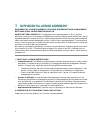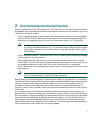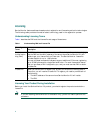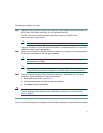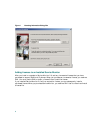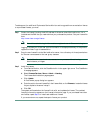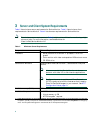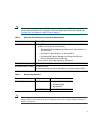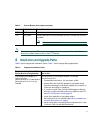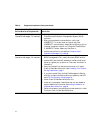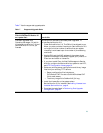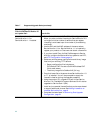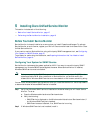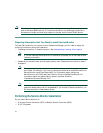
3
2 Cisco Unified Service Monitor Overview
Cisco Unified Service Monitor (Service Monitor), a product from the Cisco Unified Communications
Management Suite, receives and analyzes data from these sources when they are installed in your voice
network and configured properly:
• Cisco Unified CallManager clusters—Retain Call Detail Records (CDRs) and Call Management
Records (CMRs). CDRs include Mean Opinion Score (MOS) values that were calculated on IP
phones and voice gateways using the Cisco Voice Transmission Quality (CVTQ) algorithm.
Note For Cisco Unified CallManager versions that Service Monitor supports, see Release Notes
for Cisco Unified Service Monitor 2.0. For information about configuring Cisco Unified
CallManager clusters to work with Service Monitor, see User Guide for Cisco Unified
Service Monitor.
• Cisco 1040 Sensors (sensors)—Compute MOS for each RTP stream; sensors sends syslog messages
to Service Monitor every 60 seconds.
Each licensed instance of Service Monitor can act as a primary Service Monitor for multiple
Cisco 1040s. If you have more than one licensed instance of Service Monitor, Service Monitor can
act as secondary backups for each other. Then, when a Service Monitor is unavailable,
Cisco 1040s can fail over to a secondary Service Monitor until the primary Service Monitor is once
again available.
Note A Service Monitor that acts as a backup and the Service Monitor that it backs up must
both run the same version of Cisco Unified Service Monitor.
Service Monitor compares MOS against a threshold value—default or user-specified—for the codec in
use. When MOS drops below the threshold, Service Monitor generates SNMP traps and sends them to
up to four recipients. Service Monitor stores the data that it obtains in the database, where it is
available for display on Service Monitor reports. Service Monitor purges the database daily to
maintain 31 days of data. Optionally, Service Monitor also stores data obtained from Cisco 1040s in
files on disk.
If you configure Cisco Unified Operations Manager (Operations Manager) as a trap receiver for
Service Monitor, Operations Manager can further analyze, display, and act on the traps that Service
Monitor generates. Operations Manager can generate service quality events, display and track these
events on a real-time dashboard, and display and store event history. You can configure additional
event settings on Operations Manager that alert you to low MOS and to the occurrence of many
service quality events during a period of time. In addition, you can configure Operations Manager to
send notifications by e-mail, SNMP trap, and syslog message.




